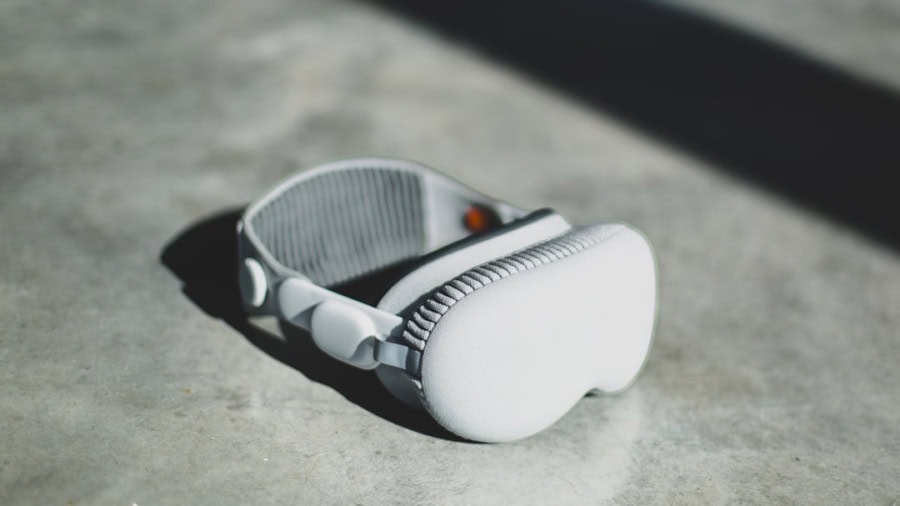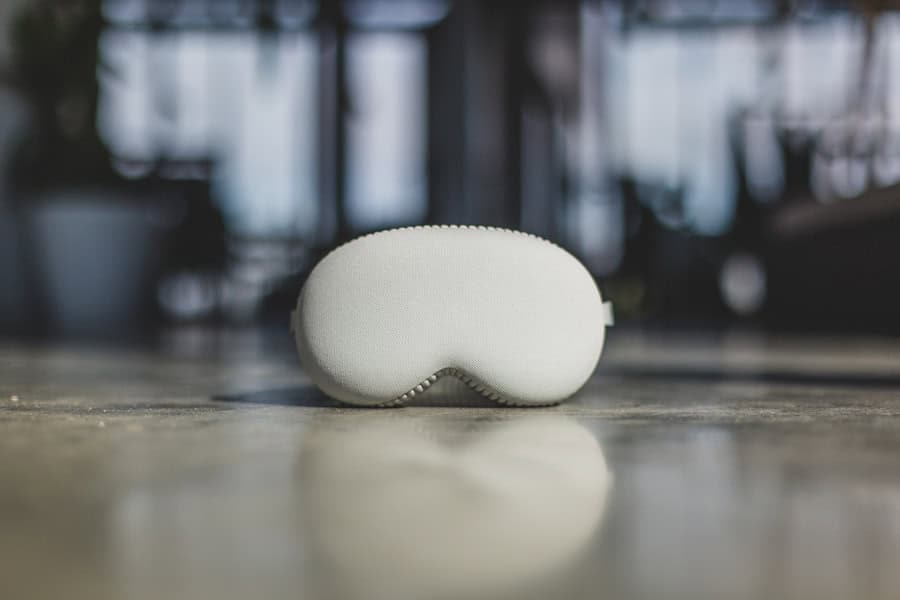Augmented Reality (AR) technology has emerged as a transformative tool in various fields, and its application in space exploration is particularly promising. By overlaying digital information onto the physical world, AR enhances the way astronauts interact with their environment, providing them with critical data and guidance in real-time. This technology is not merely a futuristic concept; it is being actively integrated into space missions to improve efficiency, safety, and the overall success of complex operations.
As space agencies like NASA and private companies like SpaceX continue to push the boundaries of human exploration beyond Earth, the role of AR in facilitating these endeavors becomes increasingly significant. The integration of AR into space missions is driven by the need for precision and reliability in an environment where every action can have profound consequences. In the vacuum of space, where communication delays can hinder decision-making, AR serves as a bridge between the astronaut and the vast amount of information required to perform tasks effectively.
This capability is particularly vital as missions extend further into the solar system, where the challenges of distance and isolation become more pronounced.
Key Takeaways
- AR technology is being used in space exploration to assist astronauts with repairs and maintenance tasks.
- Performing repairs in space presents unique challenges such as microgravity and limited resources.
- AR is used for training astronauts and simulating repair scenarios to prepare them for space missions.
- AR provides real-time guidance and visual overlays to help astronauts perform repairs accurately and efficiently.
- The use of AR technology in space repairs offers benefits such as improved safety, reduced time for repairs, and increased mission success rates.
The challenges of performing repairs in space
Performing repairs in space presents a unique set of challenges that are not encountered on Earth. The microgravity environment complicates even the simplest tasks, as objects do not behave as they do under normal gravitational conditions. For instance, tools can float away if not secured properly, and fluids behave unpredictably, making it difficult to manage leaks or spills.
Additionally, the confined spaces within spacecraft or space stations can limit movement and visibility, further complicating repair efforts. Astronauts must often work in cumbersome spacesuits that restrict dexterity, making intricate tasks even more challenging. Moreover, the psychological pressure of working in such an alien environment cannot be underestimated.
Astronauts are trained professionals, yet the stakes are incredibly high when they are tasked with repairing critical systems that ensure their survival. The potential for equipment failure or malfunction can lead to catastrophic consequences, heightening stress levels during repairs. Communication delays with mission control can exacerbate these challenges, as astronauts may have to rely on their training and intuition rather than immediate guidance from experts on the ground.
In this context, the need for effective tools that can assist astronauts in overcoming these obstacles becomes paramount.
The use of AR for training and preparation
Before embarking on missions, astronauts undergo rigorous training to prepare for the myriad challenges they may face in space. Augmented Reality technology has revolutionized this training process by providing immersive simulations that closely mimic real-life scenarios. Through AR applications, astronauts can practice repairs and other critical tasks in a controlled environment that replicates the conditions they will encounter in space.
This hands-on experience allows them to familiarize themselves with tools and procedures without the risks associated with actual space operations. For example, NASA has developed AR training modules that allow astronauts to visualize complex systems and components of spacecraft. By using AR headsets, trainees can see 3D models of equipment overlaid onto physical objects, enabling them to understand spatial relationships and operational procedures more intuitively.
This method not only enhances learning but also builds confidence among astronauts, as they can repeatedly practice tasks until they feel proficient. The ability to simulate various scenarios—ranging from routine maintenance to emergency repairs—ensures that astronauts are well-prepared for any situation they may encounter during their missions.
How AR helps astronauts with real-time guidance during repairs
Once in space, the utility of Augmented Reality becomes even more pronounced as astronauts engage in real-time repairs.
This capability allows astronauts to receive step-by-step guidance while keeping their hands free to manipulate tools and components.
For instance, if an astronaut needs to replace a faulty circuit board, AR can overlay visual instructions on the actual equipment, highlighting which screws to remove and how to safely disconnect wires. Furthermore, AR systems can integrate data from various sensors aboard the spacecraft, providing astronauts with real-time feedback on their actions. For example, if an astronaut is working on a life support system, AR can display vital statistics such as oxygen levels or pressure readings alongside the repair instructions.
This integration of data not only enhances situational awareness but also allows astronauts to make informed decisions quickly. In an environment where time is often of the essence, having access to critical information at a glance can mean the difference between success and failure.
The benefits of using AR for space repairs
The advantages of employing Augmented Reality for repairs in space extend beyond immediate task execution; they also encompass broader implications for mission success and astronaut safety. One significant benefit is the reduction of errors during complex procedures. By providing clear visual guidance and contextual information, AR minimizes the likelihood of mistakes that could arise from miscommunication or misunderstanding of instructions.
This is particularly crucial when dealing with intricate systems where even a small error could lead to significant consequences. Additionally, AR technology enhances collaboration among crew members. In situations where multiple astronauts are involved in a repair task, AR can facilitate communication by allowing team members to share visual information in real-time.
For instance, one astronaut could annotate a live video feed with notes or highlights while another works on a different aspect of the repair. This collaborative approach fosters teamwork and ensures that everyone is on the same page regarding the task at hand. As missions become more complex and involve larger crews or international partnerships, such collaborative capabilities will be essential for maintaining efficiency and safety.
Case studies of successful repairs using AR technology
Several case studies illustrate the successful application of Augmented Reality technology in space repairs. One notable example occurred during a mission aboard the International Space Station (ISS), where astronauts faced a malfunctioning cooling system that required immediate attention. Utilizing an AR headset equipped with specialized software, the crew was able to access detailed schematics of the cooling system overlaid onto their workspace.
This visual aid allowed them to identify the source of the problem quickly and execute repairs with precision. Another compelling case involved NASA’s use of AR during a simulated Mars mission conducted at Johnson Space Center. Astronauts were tasked with repairing a rover that had sustained damage during a simulated dust storm.
By employing AR technology, they were able to visualize repair procedures while interacting with physical components of the rover. The simulation demonstrated not only the effectiveness of AR in enhancing repair capabilities but also its potential for future missions where astronauts may need to operate autonomously on distant planets.
The future of AR in space exploration and repairs
Looking ahead, the future of Augmented Reality in space exploration appears bright as advancements in technology continue to evolve. As AR systems become more sophisticated, we can expect even greater integration with artificial intelligence (AI) and machine learning algorithms. These developments could enable predictive maintenance capabilities, where AR systems analyze data from spacecraft systems to anticipate potential failures before they occur.
Such proactive measures would significantly enhance mission safety and reduce downtime caused by unexpected repairs. Moreover, as space agencies explore plans for lunar bases and manned missions to Mars, the role of AR will likely expand beyond repairs to encompass a wide range of operational tasks. From conducting scientific experiments to navigating unfamiliar terrain, AR could serve as an essential tool for astronauts working in challenging environments.
The ability to overlay critical information onto their surroundings will empower astronauts to make informed decisions quickly and efficiently—an invaluable asset as humanity ventures further into the cosmos.
Conclusion and the impact of AR on the future of space missions
The integration of Augmented Reality technology into space exploration represents a significant leap forward in how astronauts approach repairs and other critical tasks. By enhancing training processes, providing real-time guidance during operations, and fostering collaboration among crew members, AR has proven itself as an indispensable tool in the unique challenges posed by space environments. As we look toward future missions that will take humans further into our solar system than ever before, the impact of AR on mission success and astronaut safety cannot be overstated.
As we continue to push the boundaries of exploration beyond our planet, embracing innovative technologies like Augmented Reality will be crucial for overcoming obstacles that lie ahead. The potential for AR to transform not only how we conduct repairs but also how we train astronauts and execute complex operations opens up new possibilities for human presence in space. With each advancement in this field, we move closer to realizing our dreams of exploring distant worlds while ensuring that our astronauts are equipped with the best tools available for their journey into the unknown.
In a related article, parents can learn how to choose their child’s first tablet by visiting




